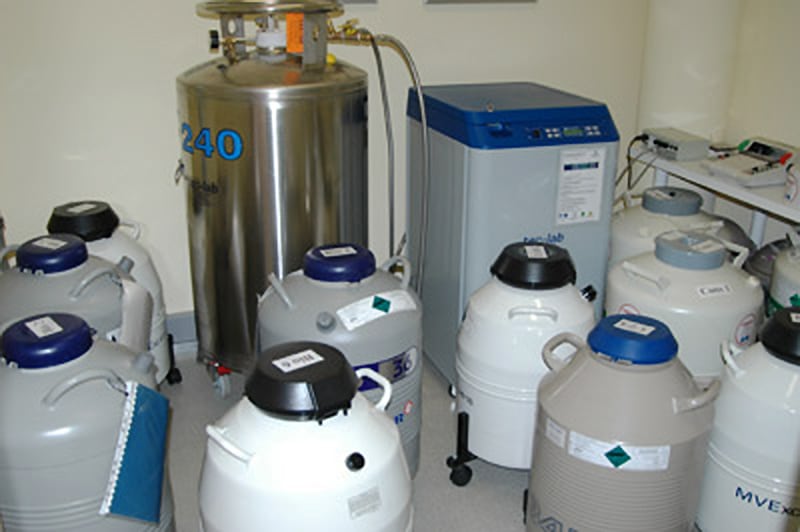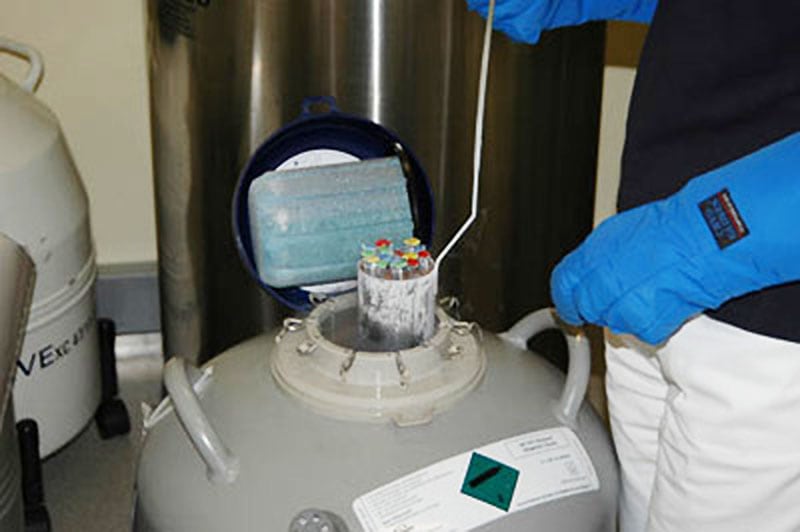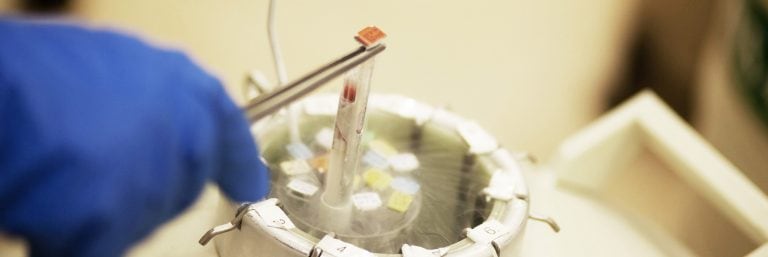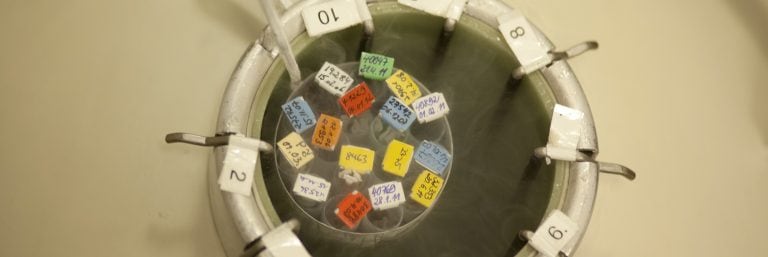Cryoconservation
Cryopreservation (freeze storage)
It has been technically possible for many years to freeze cells of various kinds in order to subsequently thaw them out again after months to years without them having suffered any significant damage.
The problem with freeze preservation of cells lies in the potential destruction of cell organelles that are necessary for further development. This is mainly due to the formation of ice during freezing, because the cells consist for the most part of water. Another possibility for disruption is damage caused by fluid flow due to osmotic gradient within the cell. Adding antifreeze reduces the risk of damage, but it also has a potential risk.


There are two cryopreservation methods:
- the so-called slow cooling, i.e. gradual freezing or slow-freezing
- Rapid freezing or vitrification

